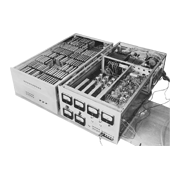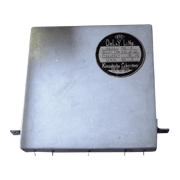This was a transistor-based binary electronic computer prototyped in 1956 by the Electrotechnical Laboratory. It is thought that this was probably the world's first transistor-based electronic computer using the stored program method. The machine was called the Mark III, since it was the successor of the ETL Mark I relay-based computer (completed in 1952 by Goto Mochinori, the Laboratory Director at that time), and the Mark II, a larger practical machine which was under development at that time. The research and development of ETL Mark III were conducted mainly by Takahashi Shigeru, Nishino Hiroji, Matsuzaki Isokazu and Kondo Kaoru of Electronics Research Division.
Dynamic circuits based on a single transistor were used for basic logic circuits. About 130 point-contact transistors and about 1,800 germanium diodes were used for logic elements, and these were housed on 300 plug-in packages which could be slipped in and out. At the suggestion of Division Director Wada Hiroshi, ultrasonic delay elements using optic glass as a medium were developed, with the cooperation of Kaneishi Laboratories, and four of these were used to realize a 128 word memory unit. The system was the binary serial single-address type, with 16-bit words for both instructions and numerical values. It was the synchronous type with a 1MHz/4-phase clock cycle, and arithmetic performance of 560µ for addition and subtraction and 768µ for multiplication. Design was finished in March 1956, and fabrication in April of that same year. Operation began in July, and this system became the second automatic electronic computer completed in Japan, after the vacuum tube based FUJIC of Fuji Photo Film.
Today, a logic circuit plug-in package used in the ETL Mark III, and an optical glass ultrasonic delay element used in its memory unit are preserved at the National Institute of Advanced Industrial Science and Technology.



